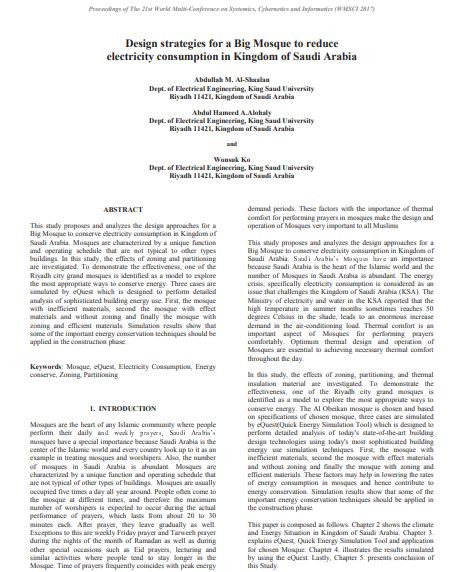
This study proposes and analyzes the design approaches for a Big Mosque to conserve electricity consumption in Kingdom of Saudi Arabia. Mosques are characterized by a unique function and operating schedule that are not typical to other types buildings. In this study, the effects of zoning and partitioning are investigated. To demonstrate the effectiveness, one of the Riyadh city grand mosques is identified as a model to explore the most appropriate ways to conserve energy. Three cases are simulated by eQuest which is designed to perform detailed analysis of sophisticated building energy use. First, the mosque with inefficient materials, second the mosque with effect materials and without zoning and finally the mosque with zoning and efficient materials. Simulation results show that some of the important energy conservation techniques should be applied in the construction phase.
Al-Shaalan, Abdullah M., Abdul Hameed A. Alohaly, and Wonsuk Ko. “Design strategies for a big mosque to reduce electricity consumption in the Kingdom of Saudi Arabia.” In The 21st World Multi-Conference on Systemics, Cybernetics and Information, Wmsci, Orlando, 2017, pp. 313-317.
I agree to the terms outlined below:
You agree to upload and assign Mosqpedia Database the rights to use the content worldwide and in perpetuity across all current and future media platforms. Mosqpedia Database may edit, copy, adapt and translate your contribution.
The content will be distributed under the Creative Commons Attribution-Deed – Attribution-NonCommercial-NoDerivatives 4.0 International – Creative Commons
All data will be stored in line with data protection regulations.